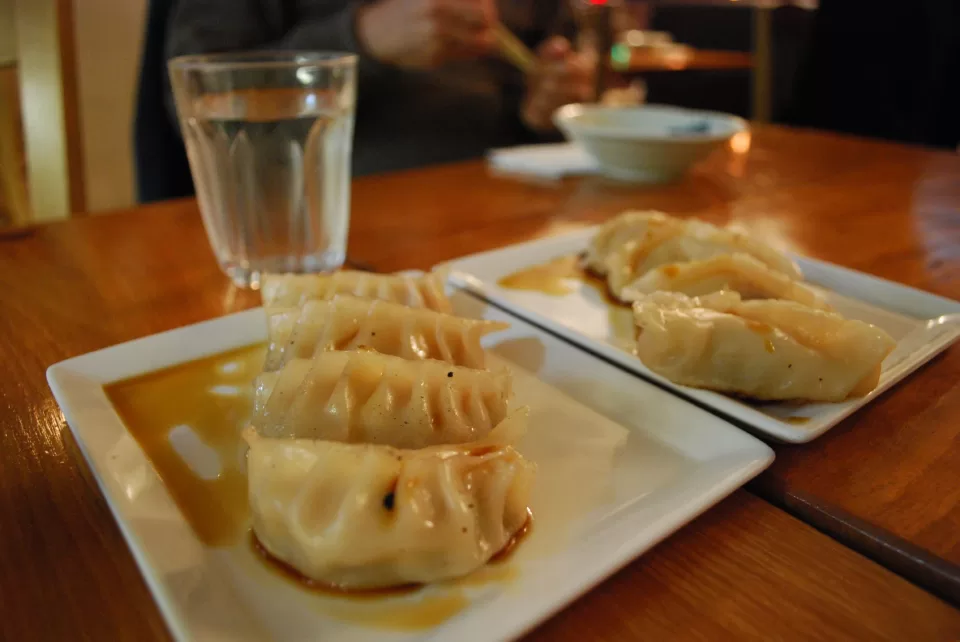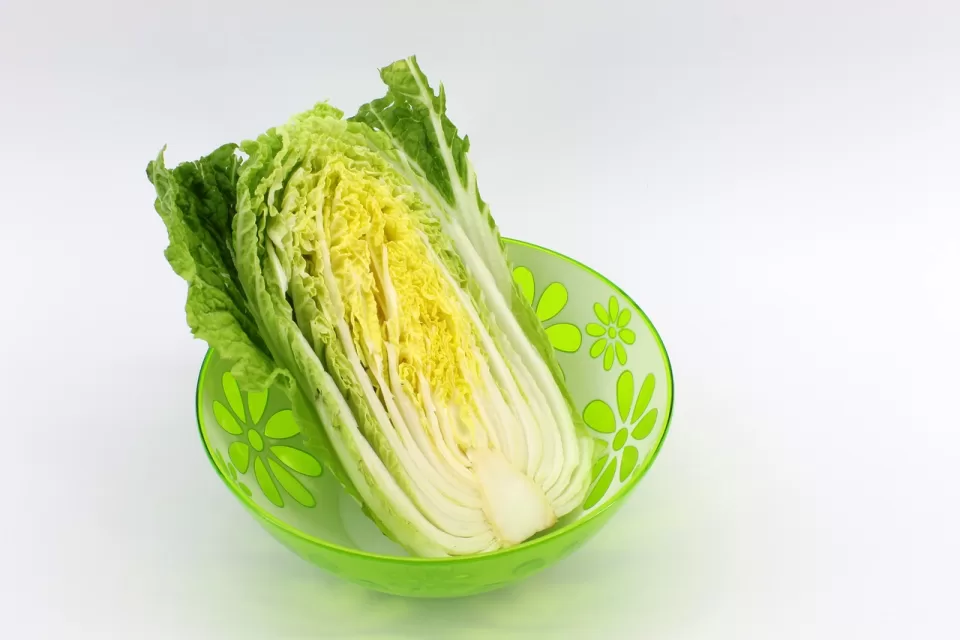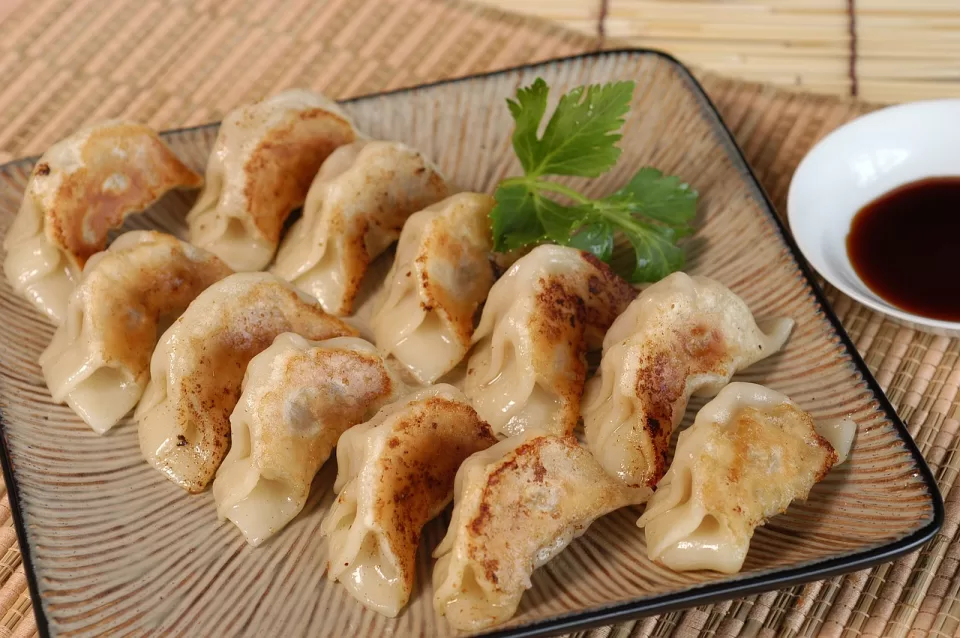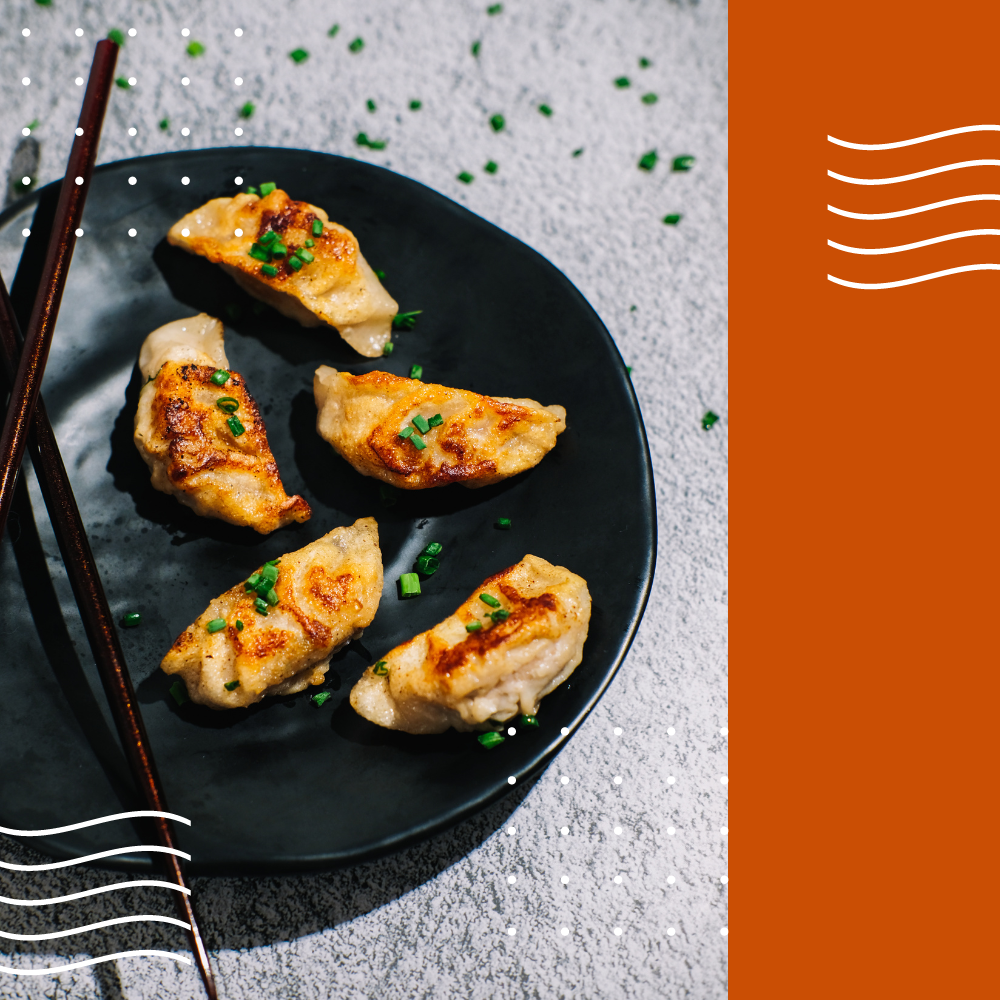Chicken gyoza, also known as Japanese dumplings, constitute a crucial cornerstone of Japanese cooking. Ground chicken mixed with vegetables forms the savory heart of these stuffed delights. While traditional gyoza typically employs ground pork, using chicken instead offers a lighter version while still preserving the iconic taste and texture. Chicken gyoza is usually pan-fried to golden brown perfection on one side, while the other side is steamed, providing a delicate balance of crispy and soft textures.

Chicken Gyoza Recipe
Making chicken gyoza at home involves three critical steps: preparing the filling, wrapping the gyoza, and then cooking them.

Gyoza Fillings
The primary ingredient of chicken gyoza is, of course, ground chicken. The other main component is cabbage- either Chinese cabbage or napa cabbage- which should be finely grated to mix evenly with the meat. Additional flavorful ingredients include soy sauce (1 tablespoon), sesame oil (1 teaspoon), and optionally rice wine – but only in very moderate quantities.
To keep it traditional, you may add finely chopped Chinese chives to the mixture; however, this depends entirely on your personal preference.
Wrapping Chicken Gyoza
The dumpling’s wrapper holds all the ingredients together and provides a delightful chewy contrast to the savory filling inside when cooked just right. You can create homemade gyoza wrappers using a blend of flour and water. Alternatively, store-bought gyoza or wonton wrappers work too and save time.
To wrap the gyoza, place a spoonful of your filling in the center of each wrapper. Wet the edges with water using your finger; this will help it stick together when folded. Fold the wrapper in half over the filling and make a series of pleats along one side to seal off your dumpling tightly while creating its unmistakable shape.
Place each piece on a baking sheet lined with parchment paper as soon as you finish making it—cover them with a damp paper towel if you’re not going to cook them immediately.
Cooking Process for Chicken Gyoza
Japanese pan-fried dumplings achieve their unique dual texture through a combined cooking method that involves both frying and steaming.
Heat a non-stick pan with some oil over medium heat; after that, arrange your gyozas on their flat side in a single layer but try not to overcrowd them. Allow them to cook until their bottoms turn golden brown — this process takes around 4 to 5 minutes.
Next comes the steaming part—add ¼ cup water into the pan; then cover with a lid immediately. Let steam for another 4 to 5 minutes or until all water has evaporated — this finishes cooking your gyozas while making their top side nice and soft.

The Perfect Dipping Sauce
A good chicken gyoza recipe isn’t complete without an accompanying dipping sauce—it provides an additional blast of flavor that enhances each bite. A basic yet incredibly tasty sauce consists of soy sauce, vinegar, and chili oil in adjusted proportions according to taste.
Storing Your Homemade Gyoza
When made at home from scratch using fresh ingredients like raw chicken, these little packets of joy can last up to two days refrigerated—if stored appropriately in an air-tight box—or several months frozen in freezer bags without compromising the quality too much.
Ensure they are placed neatly spaced apart when freezing; otherwise, they can stick together due to moisture content—this could break them apart during thawing or cooking.
Your efforts at mastering Japanese cooking 101 may seem daunting initially, especially if you haven’t tried making dumplings before, but with some practice & patience, whipping up perfect batches of chicken gyoza becomes easier every round! After all, nothing beats homemade gyozas served piping hot straight from your own kitchen stove!
Remember: Every recipe you’ll find varies slightly based on personal preferences or twists added by different chefs—and there’s no harm in experimenting once you’ve gotten down to your basics! So go ahead, gather up your meat & vegetables—after all, there’s nothing like getting stuck into some serious Japanese cuisine-making action at home.
Another delicious Japanese recipe that you should is birria ramen recipe. This fusion dish brings together the best of both worlds by combining the richness of Mexican birria stew with the comforting goodness of Japanese ramen noodles.
Understanding Chicken Gyoza FAQ
What is chicken gyoza?
Chicken gyoza refers to a type of Japanese dumpling that is made with a filling primarily consisting of ground chicken and vegetables.
How do I make the gyoza sauce?
To make the gyoza sauce, you can mix together soy sauce, rice vinegar, sesame oil, and a dash of chili oil for some heat.
What is the center of the gyoza wrapper called?
The center of the gyoza wrapper is called the filling area, where the chicken filling is placed before sealing.
Can I steam the gyoza instead of pan-frying?
Yes, you can steam the gyoza instead of pan-frying them. Simply place the gyoza in a steamer basket and steam for about 8-10 minutes.
Are Japanese gyoza the same as Chinese dumplings?
While Japanese gyoza and Chinese dumplings share some similarities, they do have distinct differences in terms of their fillings, seasoning, and cooking methods.
How much filling should I use for each gyoza?
It is recommended to use about 1 tablespoon of filling for each gyoza.
Can I use ground meat other than chicken in this recipe?
Yes, you can use ground pork, beef, or a combination of meats with chicken in this recipe.
What ingredients do I need for the gyoza filling?
The ingredients for the gyoza filling typically include ground chicken, cabbage, garlic, ginger, green onions, soy sauce, sesame oil, salt, and pepper.
How much water should I add to seal the gyoza?
You should add about ¼ cup of water to the edge of the gyoza wrapper to help seal it.
Should I cook the gyoza with the flat side or folded side down?
You should cook the gyoza with the flat side down, ensuring that the folded side is facing up for better presentation.

